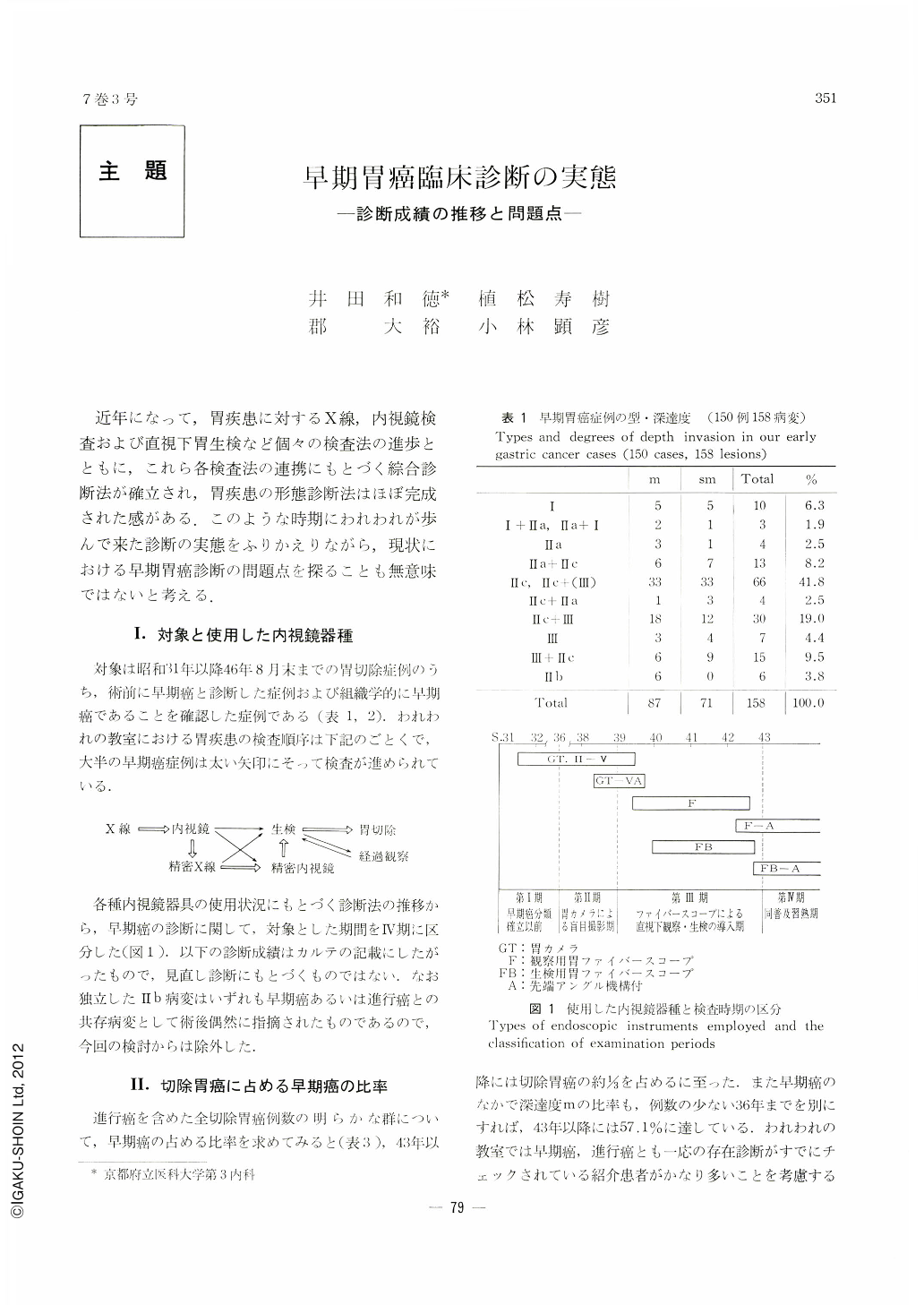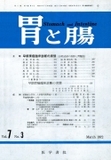Japanese
English
- 有料閲覧
- Abstract 文献概要
- 1ページ目 Look Inside
近年になって,胃疾患に対するX線,内視鏡検査および直視下胃生検など個々の検査法の進歩とともに,これら各検査法の連携にもとづく綜合診断法が確立され,胃疾患の形態診断法はほぼ完成された感がある.このような時期にわれわれが歩んで来た診断の実態をふりかえりながら,現状における早期胃癌診断の問題点を探ることも無意味ではないと考える.
A retrospective study has been made of practice in endoscopic diagnosis of early gastric cancer experienced since 1956 up to the present, with special reference to some urgent problems we are faced with now.
The subjects of this study are 150 cases (152 lesions) of early gastric cancer with the exception of six co-existing Ⅱb lesions. They were all preoperatively diagnosed as gastric cancer and then gastrectomized.
The rate of early gastic cancers to all removed cancers of the stomach went up over 30 per cent since 1968, and early cases with only m degree of depth invasion accounted for more than half (57.1%) of all early cancer cases.
Diagnosis of early gastric cancer became more accurate not only because photographic apparatus had been improved but also because examiners became more proficient. This trend became all the more manifest since 1968, when blind spots within the stomach were removed and thereby diagnostic procedures of gastric biopsy were firmly established.
In comprehensive diagnosis of early gastric cancer, including x-ray, endoscopy and biopsy, 91.4% of it were correctly confirmed as such. Somewhat insufficient rate of accuracy in endoscopy alone greatly diminished. Up till then there had been 5.8% of endoscopically suspicious cases, 2.9% of false negative and 10.7% of false positive cases. The percentage of undergone biopsy since Dec. 1964 also gradually rose up, reaching since 1968 to 74.3%, with positive rate of cancer detection estimated at as great as 96.2%.
The rate of overlooking an early cancer or its erroneous diagnosis since 1968 was each 7.1% and 2.9%. Multiple cancer cases all accounted for lesions either overlooked or mistaken.
Smaller early lesions were not so often detected when compared with the results in our early days of investigation. Even since 1968 lesions under 2 cm in diameter accounted for only 25% of all early cases. It is our sincere wish that early cancer with m degee of depth invasion as well as much smaller lesions would be detected in a higher percentage.
In 20 per cent of all cases we erred in confirming the depth of cancer invasion, most frequently at fault in types Ⅱa+Ⅱc, Ⅱc+Ⅱa and Ⅲ+Ⅱc. It was most difficult to confirm lesions arising in the upper body, pyloric antrum and along the greater curvature side. A serious problem in the diagnosis of early gastric cancer is posed by the fact that there have been quite a number of lesions as yet classified into Group Ⅲ.

Copyright © 1972, Igaku-Shoin Ltd. All rights reserved.


